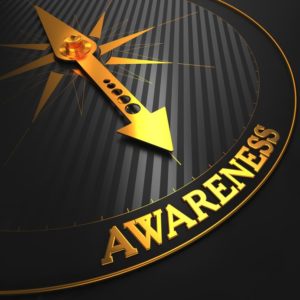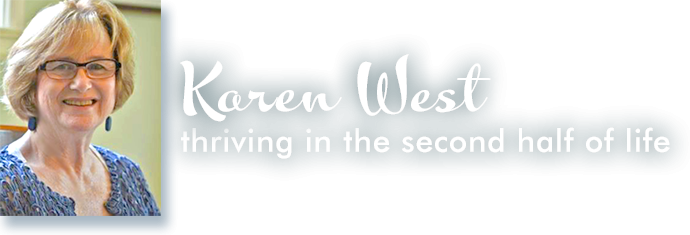In my last blog entry, I wrote about how, in an effort to make sense of our lives, we consciously or unconsciously organize the “raw data of our experience” into stories, and then we live our lives as if these stories about who we are and how the world works were absolutely true. But this is a mistake. In the Grace in Aging, Kathleen Dowling Singh says, ““We pick and choose our memories and string them together so as to keep the stories coherent, to maintain our paradigms. We need to grow in the clarity of our recognition that our mind fabricated the stories that the strung-together memories seem to substantiate. We also need to grow in the clarity of our recognition that our own minds fabricated the memories themselves.” (238)
Recognizing that our “stories” are not “true” is essential in the second half of life if we wish to ”individuate,” Jung’s term for becoming more the unique or “whole person we were meant to be.” (see my last blog entry “Starting Your Life Review”) We use our stories to determine who we are, to create what we think is our identity, our “self.” “Most of us have always reacted passively to our stories, as if they were scripts written in stone, as if they were destiny.” (Singh, 231) But it doesn’t have to be this way.
“It can be helpful to let ourselves imagine what it would be like to be at ease with the continuous flow of rising and falling. What would like be like without the compulsion to create a story, without the compulsion to defend, grasp and explain? What would my experience of life be, were self-reference with its Medusa’s head of potential snags to simply fade into the sunset? Such imagining can inspire us.” (Singh, 240)
 When my son calls me “Karen” instead of “Mom,” it can be a trigger for all my bad mother stories to begin playing in my head. But on a good day, what I’ve learned through doing the sage-ing work kicks in, and I remember that in his book From Age-ing to Sage-ing, Rabbi Zalman wrote, “What frees us from the tyranny of the past is the understanding that time is stretchable, not linear, so we can reframe and reshape it…By doing the work of inner repair, we can release ourselves from the prison-bound self of a former time.” (93) I remember that I have asked my son to forgive me for those mistakes, and even more importantly, I realize that I’m not the self I was back then. I know so much more now.
When my son calls me “Karen” instead of “Mom,” it can be a trigger for all my bad mother stories to begin playing in my head. But on a good day, what I’ve learned through doing the sage-ing work kicks in, and I remember that in his book From Age-ing to Sage-ing, Rabbi Zalman wrote, “What frees us from the tyranny of the past is the understanding that time is stretchable, not linear, so we can reframe and reshape it…By doing the work of inner repair, we can release ourselves from the prison-bound self of a former time.” (93) I remember that I have asked my son to forgive me for those mistakes, and even more importantly, I realize that I’m not the self I was back then. I know so much more now.
At this point, I would like to share something I’ve been learning about with you. I first read about it in the book The Wise Heart: A Guide to the Universal Teachings of Buddhist Psychology by Jack Kornfield and then later in The Grace in Aging by Kathleen Dowling Singh. I have been studying Buddhism for many years, and when I started reading about conscious aging, I was amazed how much they have in common. I’m hoping to some day teach a class based on Buddhism and aging.
 What I’ve been learning that there is no “self.” In Kornfield’s book, he quotes Time Magazine (2002). “After more than a century of looking for it, brain researchers have long since concluded that there is no conceivable place for a self to be located in the physical brain, and that it simply does not exist.” (72) Kornfield says, “When we inquire carefully into the question of identity, the creation of self is discovered to be a moment-to-moment process.” (74)
What I’ve been learning that there is no “self.” In Kornfield’s book, he quotes Time Magazine (2002). “After more than a century of looking for it, brain researchers have long since concluded that there is no conceivable place for a self to be located in the physical brain, and that it simply does not exist.” (72) Kornfield says, “When we inquire carefully into the question of identity, the creation of self is discovered to be a moment-to-moment process.” (74)
As Singh says, “We would do well to ask ourselves what is the compulsion to impute “I” anew upon every arising moment? The “I” impulse so rapidly asserts itself, showering “I” onto each next moment, like an automatic weapon shattering each arising’s freshness. It is enormously helpful to look for and become mindful of this impulse, the unnecessary and burdensome intrusion of selfing.” Actually, “there is no “continuously abiding, unchanging me.” (239)
When we realize that we don’t have to be trapped either in our stories or in our sense of self, we can be more present. This is especially helpful as we age. Life review at this stage of life is crucial, because it “allows the identification of the self with the story of the life lived to be released. Letting go of the story, and all the snags of the story, we begin to let go of the storyteller. This released attention becomes absorbed in the ease and radiance of present-centered awareness.” (Singh, 230)
Three other Certified Sage-ing Leaders and I will be offering an “Online Awakening the Sage Within” (OASW) over three weeks in April. Our “Awakening the Sage Within” (ASW) is a day-long workshop that will introduce you to the six core topics of sage-ing. The OASW is the online version of the ASW. It will be posted on the website (sage-ing.org) in March. The workshop will be offered on April 14, 21, and 28 from 1:30–4:00 Central. I would like to encourage you to sign up for it.


2 thoughts on “Seeing Through Our Stories”
Very interesting read!
Thank you for the comment. I hope you will continue to read and to comment on my blog.